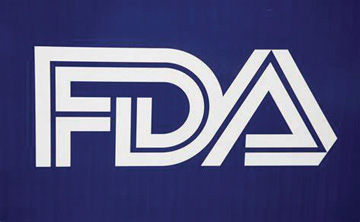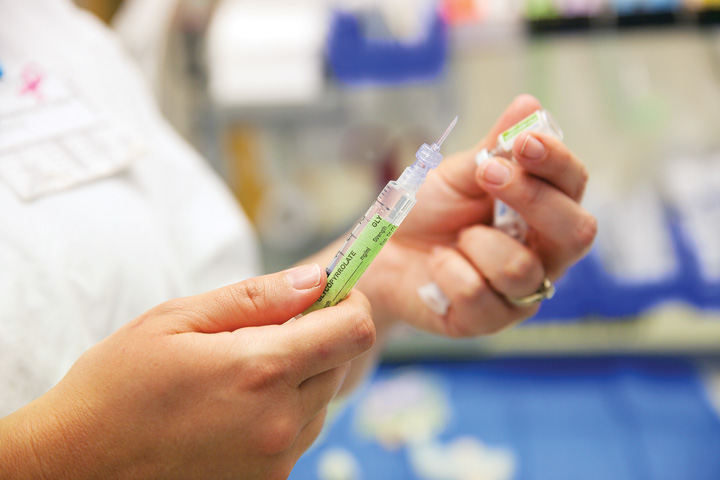- Home
- Article
Weighing the Pros and Cons of Prefilled Syringes
By: Nick Pipitone | Contributing Editor
Published: 8/8/2024
For facilities, this option could prove more or less costly than traditional vials ... and that’s not the only area of ambiguity.
Prefilled syringes have long been on the market, but they’ve recently become a more attractive choice for medical facilities. The global prefilled syringes market was forecast to be worth $14.5 billion this year and is expected to reach $22.8 billion by 2029. Its 9.5% annual growth rate shows that healthcare facilities are increasingly turning to prefilled medications.
Clear benefits
The decision to switch to prefilled syringes from traditional vials is often complex and made on a case-by-case basis. However, the advantages of prefilled drugs, particularly the time and efficiency they save in the OR, are compelling, making them an appealing choice for medical facilities.
Prefilled medications come pre-labeled, thus eliminating the time-consuming task of drawing up and often diluting drugs before administration. Prepackaged drugs also enhance the ability to comply with labeling requirements. The common options for prefilled syringes are emergency drugs that facilities like to have ready for immediate administration, such as rocuronium and ephedrine.
Various ophthalmic medications that require specific dosing are also popular in prefilled form, including moxifloxacin and cefuroxime. Obtaining these ophthalmic drugs from a pharmacy compounder also helps because many can only be reliably duplicated with extensive preparation and effort.
“There are several safety benefits of prefilled syringes that are attractive for many facilities,” says Ann Shastay, MSN, RN, AOCN, senior manager of publications at the Institute for Safe Medication Practices. “The dose is there and labeled, requiring little or no manipulation. You just must verify the dose before administration.”
When medications are mixed and labeled in-house, the responsibility of ensuring the safety of the drugs rests entirely on the facility. When compounding pharmacies are enlisted, they are responsible for the medications’ integrity, potency, sterility and stability.
Facilities must look closely at how they integrate prefilled drugs.
Karen Haberland
Depending on compounding pharmacies has its risks, however. The 2012 meningitis outbreak that killed 64 patients and sickened hundreds more was caused by contaminated drugs prepared by a compounding pharmacy. Since that incident, the FDA has taken several comprehensive steps to mitigate compounding pharmacy risks through on-site inspections and standard compliance reviews.
However, facilities must still do their due diligence on any compounding pharmacy with which they may work. It’s crucial to research options and partner with a reputable 503B compounding pharmacy (See “Key Resources” below) with a proven track record of success. A valuable research tool is the FDA’s compounding pharmacy inspection data. The FDA publicly lists any discrepancies, large or small, during inspections, significantly raising the quality bar at compounding pharmacies.
Patient safety is the ultimate goal, and it should be noted that pre-mixed and pre-labeled drugs from well-vetted compounding pharmacies are often safer and more precisely prepared than those mixed in the OR. This is especially true at high-volume facilities where staff are under intense pressure to keep the surgical schedule on track and limit turnover time between cases.
Prefilled syringes may also sometimes be less costly than traditional vials over the long run. Though they often cost more upfront per milliliter, you need to factor in waste and extended beyond-use dates, which for some prefilled medications are much longer than drug manufacturers’ expiration dates.
Waste reduction may also save money. Multiple-dose vials shouldn’t be used for more than one patient, so OR staff are often forced to discard at least some unused drugs at the end of each case. If you frequently waste even half of the medications you purchase, prefilled syringes will likely be less costly and more efficient over time.
Not everyone buys into the argument that prefilled medications are the cheaper option. “There’s no good way to quantify the cost benefits of prefilled drugs for facilities,” notes Karen Haberland, senior project officer at ECRI, a nonprofit medical safety organization in Plymouth Meeting, Pa. Ms. Haberland says many factors contribute to a cost-benefit analysis of prefilled versus traditional vials. Prefilled products may save personnel time that would be spent filling and mixing drugs.
However, prefilled packaging is also normally larger, so renting more storage rooms or refrigerators may be required. “I’ve seen cost-benefit analyses that say prefilled medications are cheaper, but I’m not so sure about it,” she says.

There are two basic types of compounding pharmacies: 503A and 503B.
503As are the classic model of a pharmacy where a physician writes a prescription for a patient and the pharmacist compounds it to that prescription — i.e., one patient, one compound.
503B compounders, however, are more like pharmaceutical manufacturers that create medications in high-volume quantities. 503Bs must register with the FDA as an outsourcing facility. You can find the FDA’s complete list here.
—Outpatient Surgery Editors
Cost savings from prefilled syringes may be unclear, but other advantages seem more apparent. Syringe tracking is an additional advantage of prefilled drugs. Compounders have recently introduced prefilled syringes with radio frequency identification (RFID) tags on their labels. Tagged syringes can be loaded on medication trays, and each tray is scanned with an RFID scanning system. The system reads each tag and uploads the information in seconds to specialized software tracks information about each syringe, from the lot number to its expiration date.
This RFID technology is beneficial in situations like drug recalls. Suppose a compounder recalls a specific syringe because of a testing issue. In that case, the tracking technology makes it much easier to know precisely how many syringes from that particular lot a facility has and where they are in the inventory. In some cases, facilities may also be able to identify every patient who received a dose of the recalled medication.

Ms. Haberland acknowledges the benefits of prefilled syringes, but she also cautions there are many caveats to consider before adding them. “Facilities must look closely at how they integrate prefilled drugs,” she says. “Staffers are used to the traditional way of vials, so what will a fixed dose do, and how will they react?”
Prefilled syringes occasionally cause confusion and staff errors if not properly integrated into a facility’s workflow. Ms. Haberland uses the example of COVID-19 vaccines that have come in prefilled form. The vaccines arrived at many facilities with prefilled dilutants intended to be mixed with the vaccine before administration. “We’ve seen reports where the dilutant has been confused for the actual vaccine, and patients were injected with the dilutant instead of the COVID-19 vaccine because of the mix-up,” she says.
Ms. Haberland also notes that prefilled medications and infusion pumps may not always be compatible. Lastly, she cautions about recent FDA safety notices on plastic syringes made in China and potential associated failures. Prefilled syringes are — for now — not included in the safety notices. “Chinese syringe imports are huge,” she says. “If you have prefilled vials, they may be the safer option than empty syringes you have that were made in China.”
The decision to switch to prefilled syringes ultimately comes down to each facility’s short- and long-term needs. For many facilities, the multiple benefits of prepacked medications are why the market for these products continues to grow. However, there must be careful consideration of potential drawbacks, as introducing prefilled syringes may be more complicated than it would seem and must be carefully integrated into an OR’s workflow. After weighing all the factors, prefilled syringes may be more attractive in some cases, but the decision will depend heavily on each facility’s unique circumstances. OSM
.svg?sfvrsn=be606e78_3)
.svg?sfvrsn=56b2f850_5)